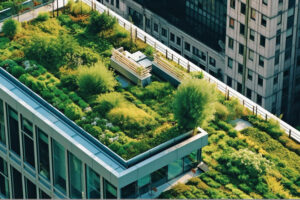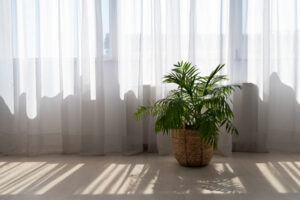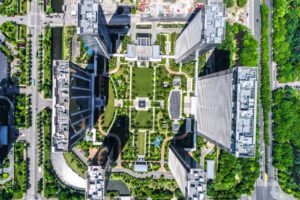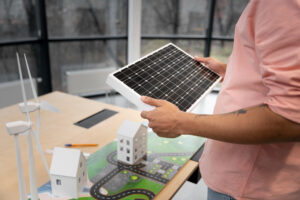 Biophilic design, a concept that integrates nature into the built environment, continues to evolve and captivate the world of architecture and interior design. From towering green roofs to nature-inspired materials and sustainable urban planning, Singapore exemplifies a commitment to harmonious living.
Biophilic design, a concept that integrates nature into the built environment, continues to evolve and captivate the world of architecture and interior design. From towering green roofs to nature-inspired materials and sustainable urban planning, Singapore exemplifies a commitment to harmonious living.
The city’s commitment to harmonious living extends beyond design, showcasing a multifaceted approach to sustainable development. Singapore’s visionary Green Plan 2030 and pioneering efforts in renewable energy reflect a positive trajectory toward a greener and more environmentally conscious future.
As we step into 2024, Singapore stands at the forefront of embracing biophilic design trends, reflecting a harmonious relationship between urban spaces and the natural world.
In this article, we will explore the biophilic design trends in 2024.
Biophilic Design Trends in 2024
Singapore is becoming a trendsetter in the design world, particularly in biophilic design. Let’s explore the exciting biophilic design trends shaping Singapore’s landscape and setting the tone for a more sustainable and aesthetically pleasing future.
1. Green Roofs and Vertical Gardens
 At the heart of Singapore’s architectural endeavors lies a growing adoption of green roofs and vertical gardens. This innovative approach enhances the aesthetic appeal of buildings and contributes significantly to sustainability. Incorporating green roofs and vertical gardens promotes biodiversity, reduces heat absorption, and improves air quality.
At the heart of Singapore’s architectural endeavors lies a growing adoption of green roofs and vertical gardens. This innovative approach enhances the aesthetic appeal of buildings and contributes significantly to sustainability. Incorporating green roofs and vertical gardens promotes biodiversity, reduces heat absorption, and improves air quality.
A striking example of this trend is the Oasia Hotel Downtown, a captivating structure enveloped by lush greenery. Integrating greenery into the building’s facade creates a living, breathing entity that serves both ornamental and functional purposes. Beyond its visual appeal, this approach aligns with Singapore’s broader commitment to environmental stewardship.
2. Nature-Inspired Materials
 In 2024, there is a discernible surge in the use of nature-inspired materials within Singaporean design. Interior spaces are now adorned with materials that mimic the textures, patterns, and colors found in the natural world. From stone and wood finishes to fabrics imitating foliage, these elements bring a touch of the outdoors inside, fostering a sense of tranquility and connection with nature.
In 2024, there is a discernible surge in the use of nature-inspired materials within Singaporean design. Interior spaces are now adorned with materials that mimic the textures, patterns, and colors found in the natural world. From stone and wood finishes to fabrics imitating foliage, these elements bring a touch of the outdoors inside, fostering a sense of tranquility and connection with nature.
This trend transforms the physical appearance of spaces and transcends into a deeper, psychological realm. The infusion of nature-inspired materials is a testament to Singapore’s dedication to creating environments that evoke a harmonious blend between the artificial and the organic.
3. Biophilic Lighting Solutions
 Lighting, a critical design aspect, has witnessed a transformative evolution in 2024. Designers are increasingly incorporating biophilic elements into lighting solutions. Maximizing natural light through innovative designs that allow sunlight to permeate interiors is a key facet of this trend. By reducing reliance on artificial lighting, spaces become more energy-efficient and environmentally friendly.
Lighting, a critical design aspect, has witnessed a transformative evolution in 2024. Designers are increasingly incorporating biophilic elements into lighting solutions. Maximizing natural light through innovative designs that allow sunlight to permeate interiors is a key facet of this trend. By reducing reliance on artificial lighting, spaces become more energy-efficient and environmentally friendly.
Dynamic lighting systems that replicate natural sunlight patterns throughout the day contribute to a healthier circadian rhythm for occupants. Singapore’s commitment to sustainability is evident in the adoption of energy-efficient lighting solutions, creating spaces that are not only visually stunning but also promote the well-being of those who inhabit them.
4. Sustainable Urban Planning
 Singapore is redefining urban planning by seamlessly incorporating biophilic principles into its infrastructure. Parks, green corridors, and interconnected green spaces have become integral components of the city’s urban fabric. The transformation into a City in Nature is exemplified through initiatives like the Rail Corridor project, where disused rail tracks are repurposed into green spaces, promoting biodiversity and providing residents with a respite from the urban hustle.
Singapore is redefining urban planning by seamlessly incorporating biophilic principles into its infrastructure. Parks, green corridors, and interconnected green spaces have become integral components of the city’s urban fabric. The transformation into a City in Nature is exemplified through initiatives like the Rail Corridor project, where disused rail tracks are repurposed into green spaces, promoting biodiversity and providing residents with a respite from the urban hustle.
This holistic approach to urban planning reflects Singapore’s commitment to creating a sustainable and livable city. Integrating green spaces into the urban environment enhances the aesthetic appeal and fosters a healthier and more balanced lifestyle for its residents.
5. Biophilic Workspaces
 As the dynamics of work undergo continuous evolution, so do the work environments in Singapore. The corporate landscape is experiencing a paradigm shift towards biophilic workspaces that prioritize employee well-being and productivity. Offices are now integrating natural elements such as indoor plants, water features, and natural color palettes to create environments that foster creativity and reduce stress.
As the dynamics of work undergo continuous evolution, so do the work environments in Singapore. The corporate landscape is experiencing a paradigm shift towards biophilic workspaces that prioritize employee well-being and productivity. Offices are now integrating natural elements such as indoor plants, water features, and natural color palettes to create environments that foster creativity and reduce stress.
This shift is not merely a superficial trend but a thoughtful response to the evolving needs of the workforce. Introducing biophilic elements in workspaces acknowledges the importance of creating a holistic and inspiring environment, ultimately enhancing employee satisfaction and performance.
6. Sustainable Architecture
 Sustainability remains a central focus in Singapore’s architectural scene. Buildings are meticulously designed with energy efficiency in mind, utilizing renewable energy sources and incorporating green technologies. This commitment aligns seamlessly with the global push towards eco-friendly practices, ensuring Singapore’s skyline evolves responsibly.
Sustainability remains a central focus in Singapore’s architectural scene. Buildings are meticulously designed with energy efficiency in mind, utilizing renewable energy sources and incorporating green technologies. This commitment aligns seamlessly with the global push towards eco-friendly practices, ensuring Singapore’s skyline evolves responsibly.
Integrating sustainability into architecture goes beyond meeting regulatory standards; it reflects Singapore’s vision for a future where buildings are not just structures but contributors to a healthier planet. The emphasis on energy efficiency and renewable sources showcases a commitment to long-term environmental stewardship.
7. Technological Integration
 In 2024, technology and biophilic design will become more pronounced. Smart buildings equipped with sensors and automation systems optimize energy consumption, ventilation, and lighting based on real-time data. This integration enhances the overall functionality of biophilic design, making it aesthetically pleasing, technologically advanced, and efficient.
In 2024, technology and biophilic design will become more pronounced. Smart buildings equipped with sensors and automation systems optimize energy consumption, ventilation, and lighting based on real-time data. This integration enhances the overall functionality of biophilic design, making it aesthetically pleasing, technologically advanced, and efficient.
Singapore’s embrace of technology within biophilic design reflects its forward-thinking approach. Incorporating intelligent technologies improves the efficiency of buildings and contributes to the overall well-being of the occupants.
Conclusion
Singapore’s biophilic design trends 2024 showcase a profound commitment to creating sustainable, aesthetically pleasing, and technologically advanced spaces. The city-state’s fusion of nature and innovation serves as a beacon for the global design community, highlighting biophilic design’s transformative power in shaping urban living’s future.
As we navigate an era where environmental consciousness is paramount, Singapore stands as a testament to the harmonious coexistence of nature and architecture. The intricate balance between green spaces and modern infrastructure is not just a design philosophy but a holistic approach toward creating a future where cities thrive in harmony with the natural world.
Ready to explore biophilic design trends in 2024? Book an appointment with E³.SPACE, and let us bring your vision to life.
